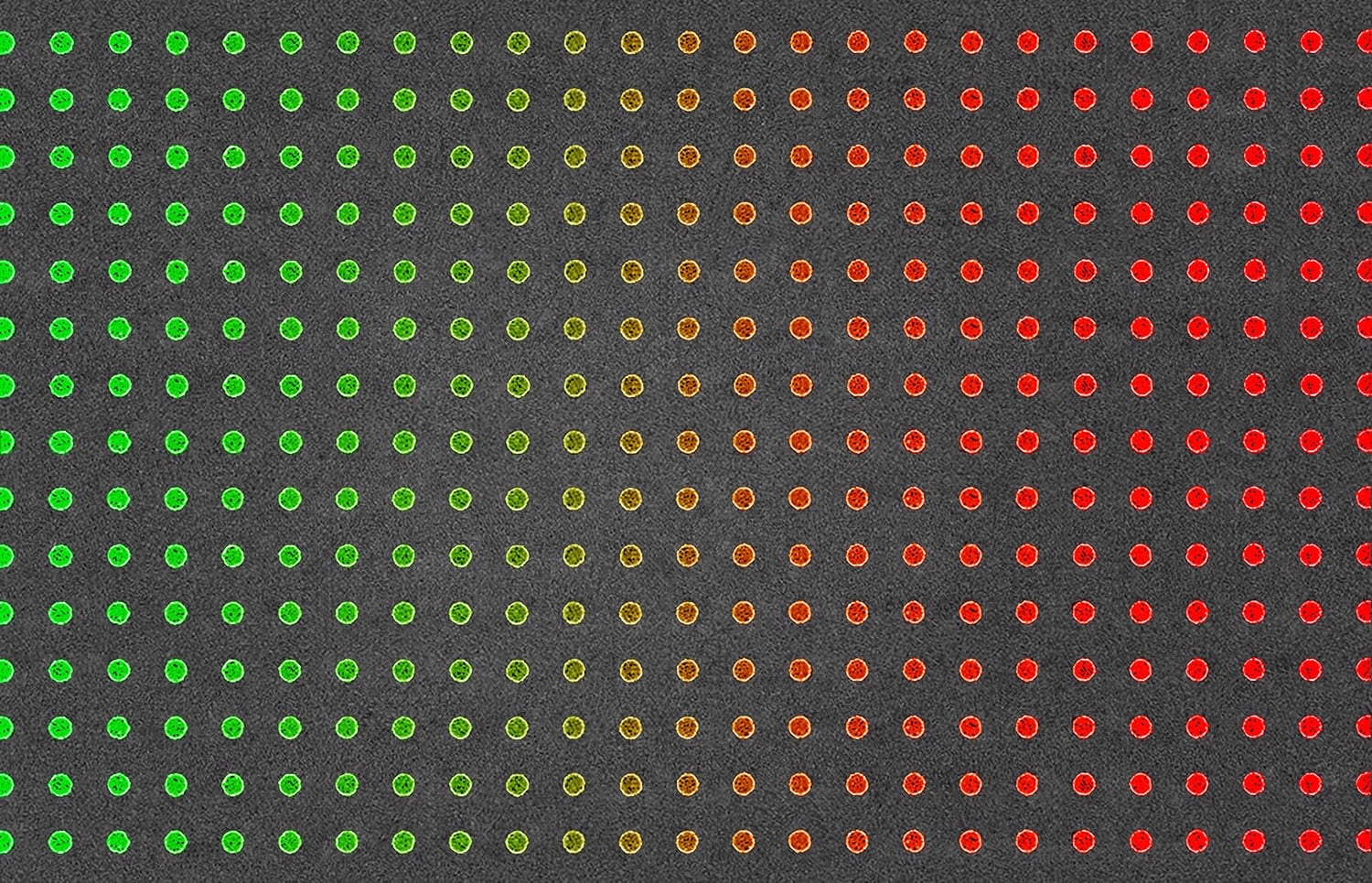
The hydrogen economy is the vision of a sustainable society where hydrogen is used as fuel for vehicles, heat generation, and energy storage, with water as the only byproduct. But a major challenge facing this transition is that the gas is explosive when mixed with air. For this reason, it is crucial to be able to detect hydrogen leaks as early as possible.
Now, researchers at the Chalmers University of Technology, Vrije Universiteit Amsterdam, and the Eindhoven University of Technology have developed an optical hydrogen sensor that can detect and record low levels of hydrogen. It thus joins the most sensitive sensors in the world.
The ultra-sensitive optical sensor consists of many metal nanoparticles that work together to detect hydrogen in their surroundings. Instead of creating a large number of samples and testing them individually to see which ones work best, the researchers have used advanced AI technology called particle swarm optimization to create the optimal interaction between the particles based on their distance to each other, diameter, and thickness.
The resulting sensor detects changes in hydrogen concentration that are as small as a few hundred-thousandths of a percent. The new sensor’s low detection limit is the result of the combination of the arrangement of the particles in a regular pattern on a surface and their fine-tuned dimensions. This arrangement turned out to be more favorable for the sensitivity of the sensor to hydrogen exposure than the random particle arrangement used in previous sensors.
“The technology around hydrogen has taken a giant leap, and therefore today’s sensors need to be more accurate and tailored for different purposes. Sometimes a very fast sensor is needed, and sometimes one is needed that works in a harsh chemical environment or at low temperatures. A single sensor design cannot meet all needs”, says Christoph Langhammer, who is also one of the founders of a new competence center: TechForH2.
The new hydrogen sensor is based on an optical phenomenon, plasmons, which occur when metal nanoparticles capture light and give the particles a distinct color. This color changes when the amount of hydrogen in the surroundings varies, and the sensor can alarm at critical levels. Based on AI design, the optimized optical hydrogen sensor was fabricated and verified to be the first of its kind to optically detect hydrogen in the parts per billion range (250 ppb).
In future work, researchers plan to further investigate the new sensor’s practical applicability within the newly started competence center TechForH2, which is coordinated by Chalmers.
Journal reference:
- Ferry Anggoro Ardy Nugroho, Ping Bai, Iwan Darmadi, Gabriel W. Castellanos, Joachim Fritzsche, Christoph Langhammer, Jaime Gómez Rivas and Andrea Baldi. Inverse-designed plasmonic metasurface with parts per billion optical hydrogen detection. Nature Communications (2022); DOI: 10.1038/s41467-022-33466-8
Ultra-sensitive optical sensor that can reduce the risks of hydrogen
Source: Tambay News

0 Comments